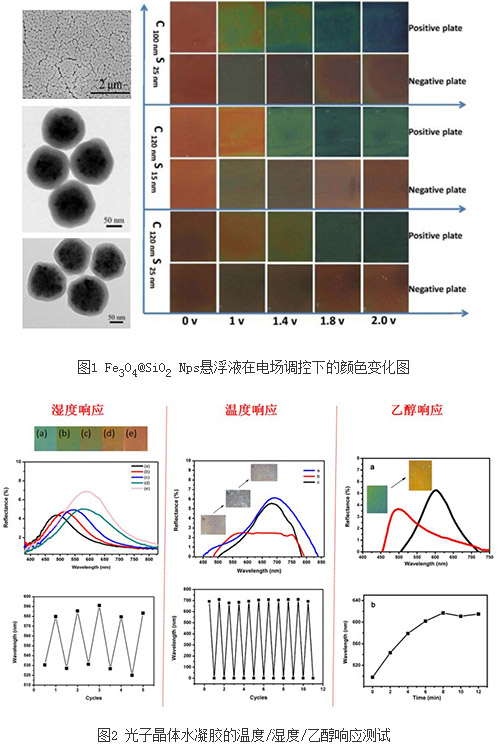Responsive photonic crystal is essentially an ordered structural material that can respond to external stimuli. It can respond to external electric field, magnetic field, temperature, pressure/tension, humidity, PH, and biological groups.
The reason for its impressiveness is that changes in external stimuli can be judged by observing changes in color; at the same time, this color is the physical structure color that will not fade. This makes it have a broad application prospects in many fields such as display, sensing, anti-counterfeiting, and decoration.
How to construct a new responsive photonic crystal system, integrate more response performance, and make structural color stable for a long time has always been a research hotspot. The micro-nano functional materials and application team of the Ningbo Institute of Materials Technology and Engineering, Chinese Academy of Sciences is based on each This kind of nanoparticle synthesis regulation and response mechanism (such as TiO2, SiO2, Fe3O4, etc.), based on a variety of methods (self-assembly, external induction, etc.) to build a different response photonic crystal system. The team of researchers combined TiO2 with high refractive index and other advantages to synthesize TiO2 and SiO2@TiO2 nanoparticles, studied the compatibility of different particles and different solvents, and realized the regulation of structure color under the electric field (J. Mater. Chem. C, 2014, 2, 1990). The Fe3O4, Fe3O4@SiO2, Fe3O4@C nanoparticles and hollow Fe3O4@C nanoparticles have been successfully synthesized and regulated, and the control of the structural color in the visible spectral range by electric and magnetic fields has been achieved (RSC. Adv, 2015, 5, 6489; Colloid). Surface. A, 2016, 498, 74), and through the control of experimental conditions, it is possible to realize the effect of different structural colors on both sides of the color-developing device, and at the same time, the phenomenon of reflection peak migration (J. Alloy. Compd. 2016, 654, 251).
Currently, most color rendering devices are based on a sandwich structure formed of two ITO glass pieces, and then the nanoparticles form a colloidal crystal order structure in the structure, and an electromagnetic field is applied to achieve structural color regulation. A big problem is that its stability is poor, it is not easy to save, and it needs to seal the solution in the device, which increases the complexity of the preparation process and the production cost, which is not conducive to practical application. Therefore, the solid state of the device and the realization of multiple stimulation control have become new research hotspots. The research group explored and explored responsive solid-state photon hydrogels. By adjusting the ordered structure of the particles and combining some smart polymers such as AM and NIPAM, hydrogels capable of displaying different structural colors were prepared. The hydrogels have good response to humidity, solvents, pressure/tension, etc. The structural color can be regulated throughout the visible light range, and the cycle performance is good, which is conducive to the practical application of environmental monitoring (Sensors and Actuators B, 2016, 236, 399).
The above research work was supported by the National Natural Science Foundation of China (11404347, 11374311, 11574331), the Natural Science Foundation of Ningbo (2014A610123) and the Director of Ningbo Materials Institute.

Birch Plywood,Birchwood Plywood,Staining Birch Plywood,Birch Veneer Plywood
LINYI JIUHENG IMP&EXP CO.,LTD , https://www.jiuhengwood.com